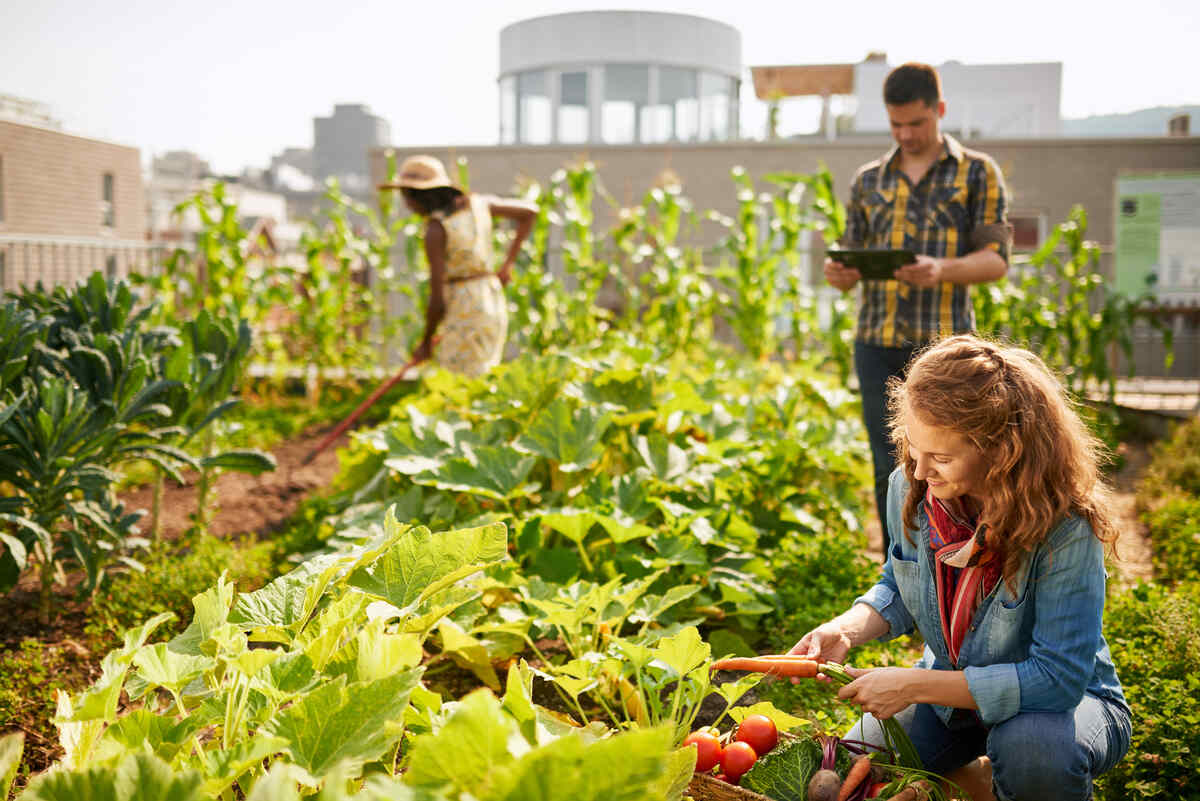5 Simple Techniques For City Blooming
Table of ContentsGetting The City Blooming To WorkSome Ideas on City Blooming You Should KnowCity Blooming - The FactsAbout City BloomingSome Known Questions About City Blooming.
Interested in growing food to buy in the City of Chicago? Thinking of starting a community garden? Adjustments to the Chicago Zoning Regulation permit agricultural usages like community yards and city farms in several components of the city. Below is a list of regularly asked inquiries concerning the guidelines and laws that cultivators ought to consider when preparing a city farming project.
The zoning change does not customize any type of other codes managing composting, structure authorizations, purchasing or renting City owned building, service licenses or environmental contamination. There are existing codes that control these concerns and they stay completely result and may apply to your job. Neighborhood gardens are commonly had or managed by public entities, civic organizations or community-based organizations and kept by volunteers.
Urban ranches grow food that is meant to be marketed, either on a not-for-profit or for-profit basis. Due to their business purpose, city ranches need a company license.
The Ultimate Guide To City Blooming
Composting is allowed but just for plant material that is produced and utilized on website. The amount of compost product can not surpass 25 cubic backyards at any kind of given time according to the requirements in 7-28-715 of the City's Municipal Code. Yes. Since the dirt at many brand-new yard sites needs changing, compost, soil, wood chips, or other products can be acquired to build or boost the expanding space - sustainability.

If a structure license is called for then the hoophouse will be thought about an accessory building. You can figure out more concerning the building authorization needs by getting in touch with the Division of Buildings. The 25,000-square-foot dimension restriction is planned to stop a single area yard from controling a provided block or interfering with the block's existing household or business character.
The restriction does not apply to gardens located in Public Open Room (POS) districts. Can there be more than one community garden that is 25,000 square feet on a single block? Secure fencing is not called for, however, gardens that have large car parking areas may be required to mount fencing or other landscape design functions.
The Single Strategy To Use For City Blooming
B1 & B2 districts need that all business use tasks be performed inside your home. R districts limit business activity. The policies show the objective and intent of the Zoning Code. Is secure fencing needed for urban ranches? Yes. Fences may be called for, along with landscaping and testing, for specific parking lot and outside job or storage areas depending on place and the details activity taking location.
Yes. Urban farms need building licenses and zoning authorizations prior to building and construction. Various other forms of city review might be required depending on specific structures, tasks, size, landscape design, licensing, public heath and stormwater administration problems. A number of these demands are recognized in the task design or allowing procedure, however, the applicant might be liable to individually identify specific licenses or allows that might be required.
The Department of Company Matters and Consumer Security can assist determine the details type of organization permit that's called for. Off road parking is needed for many business projects in Chicago. The called for number of parking rooms is based on the number of employees working on site and not the square video footage of the expanding room.
The 8-Minute Rule for City Blooming

Yes. A city ranch can sell garden compost product produced on site, nonetheless, the operation has to abide with the regulations in 7-28-715 of the Chicago Municipal Code. Yes. Aquaponic systems are allowed inside on city ranches in several zoning districts. A zoning evaluation and building permit is needed in order to mount frameworks or systems and a business permit is required as described above.
As much as 5 hives or swarms of honey might be maintained as an accessory use. However, beekeepers must sign up with the Illinois Department of Farming. For more details concerning the suggested zoning change you may call the Division of Real Estate and Economic Advancement, Bureau of Planning and Zoning at 312.744.8563.
Farming in cities and metropolitan locations A metropolitan farm in Chicago. Urban agriculture describes numerous techniques of cultivating. https://anotepad.com/note/read/ewb5qah3, processing, and dispersing food in urban areas. The term additionally relates to the location tasks of pet husbandry, aquaculture, beekeeping, and gardening in a metropolitan context. More Bonuses Urban agriculture is identified from peri-urban farming, which takes place in rural locations beside suburbs.
The Definitive Guide for City Blooming
, that seek to form social networks founded on a common values of nature and community holism. These networks can establish by method of official institutional support, ending up being incorporated into local community planning as a "change town" movement for lasting urban advancement.
Some of the very first proof of metropolitan agriculture comes from Mesopotamia.